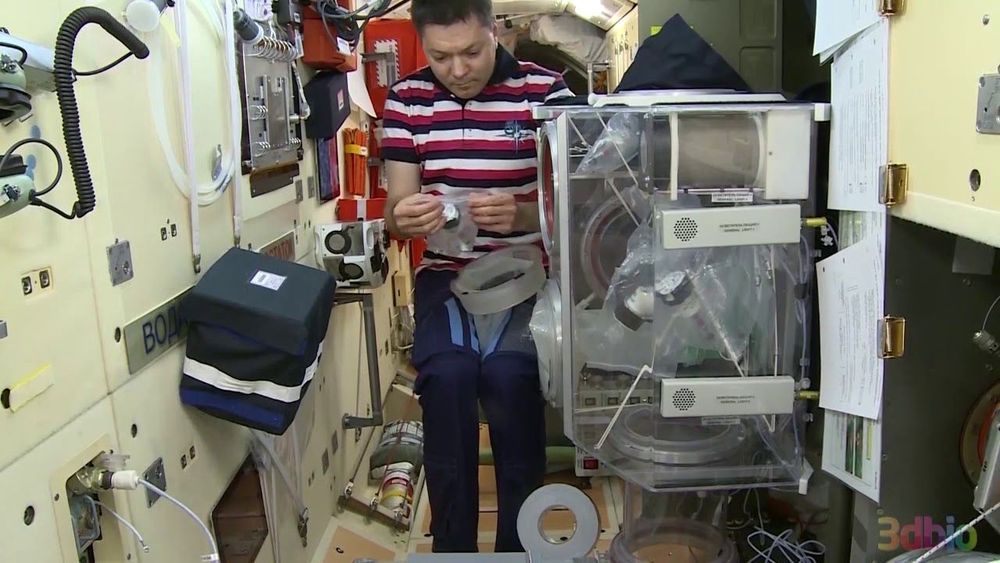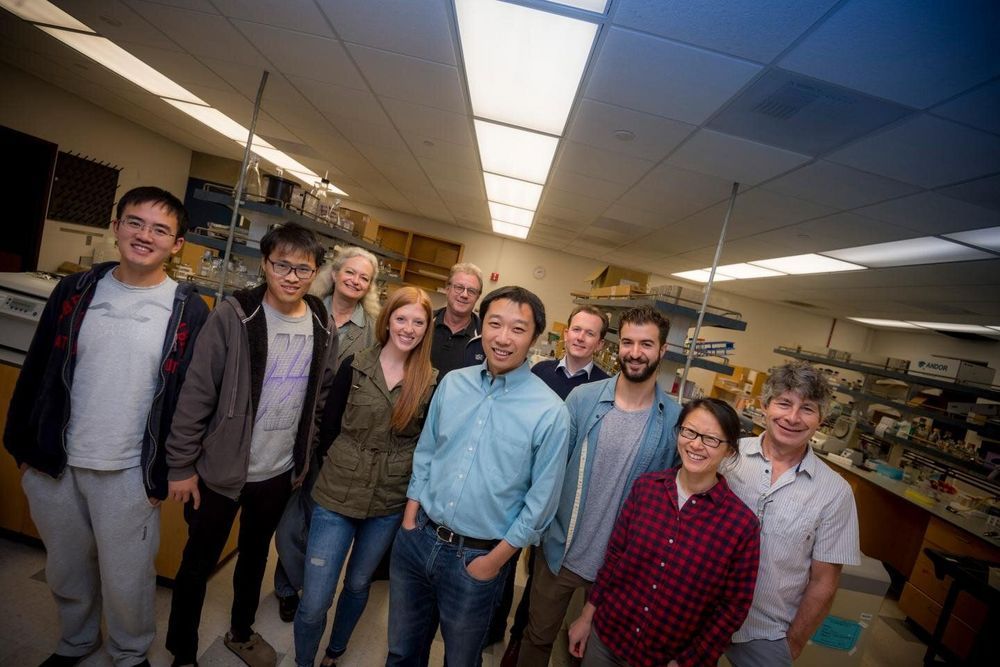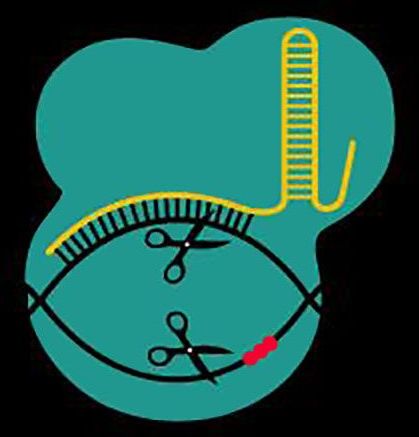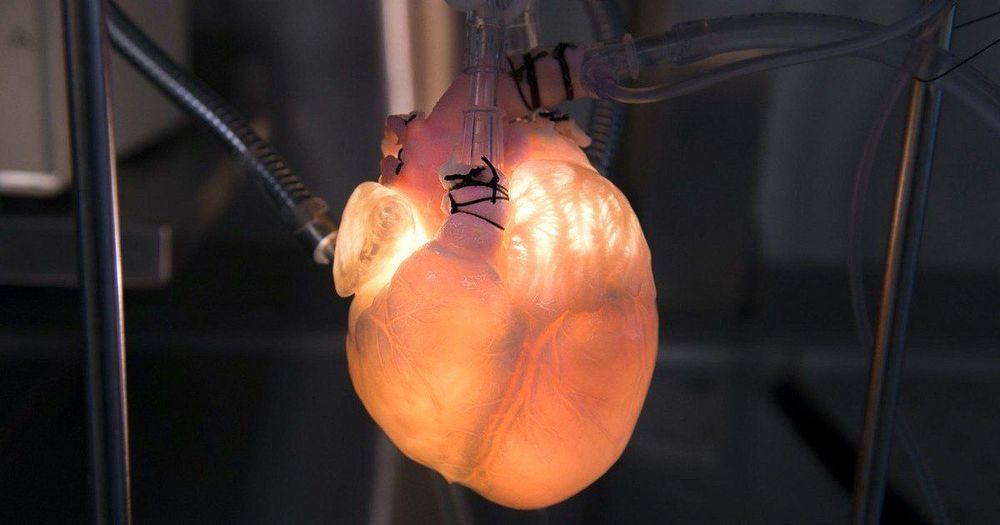Archive for the ‘bioengineering’ category: Page 110
Jul 17, 2020
Researchers discover 2 paths of aging and new insights on promoting healthspan
Posted by Kevin Huang in categories: bioengineering, biotech/medical, genetics, life extension
Aging/longevity link!
Molecular biologists and bioengineers at the University of California San Diego have unraveled key mechanisms behind the mysteries of aging. They isolated two distinct paths that cells travel during aging and engineered a new way to genetically program these processes to extend lifespan.
The research is described July 17 in the journal Science.
Continue reading “Researchers discover 2 paths of aging and new insights on promoting healthspan” »
Jul 12, 2020
New CRISPR enzyme mutation proves almost 100 times more precise
Posted by Genevieve Klien in categories: bioengineering, biotech/medical, genetics
The CRISPR-Cas9 gene editing system is an extremely powerful tool, but there are still a few kinks to iron out. One of the main problems is off-target edits, which can have serious consequences. Now, researchers have found a particular mutation of the CRISPR enzyme that’s almost 100 times more precise than the most commonly used one.
CRISPR gene-editing is based on a bacterial defense system, in which the bugs use a particular enzyme to snip out a section of a pathogen’s DNA and store it for future reference. Next time that pathogen is encountered, the system will recognize it and be better equipped to fight it off.
Scientists managed to co-opt this system as a handy genetic engineering tool. CRISPR-Cas9 uses this mechanism to scour a target’s genome for a specific sequence of DNA – say one that could cause disease – then cut it out, sometimes replacing it with a more beneficial sequence.
Jul 10, 2020
Interbacterial Toxin Leads Scientists to CRISPR-Free Method for Precise Mitochondrial Gene Editing
Posted by Quinn Sena in categories: bioengineering, biotech/medical, genetics
The solution was to split the protein into two harmless halves. Liu’s team, led by graduate student Beverly Mok, used 3D imaging data from the Mougous lab to work out how to divide the protein into two pieces. Each piece did nothing on its own, but when reunited, they reconstituted the protein’s full activity. The team fused each deaminase half to customizable DNA-targeting proteins that did not require guide RNAs. Those proteins bound to specific stretches of DNA, bringing the two halves of the deaminase together. That let the molecule regain its function and work as a precision gene editor—but only once it was correctly positioned.
Liu’s team used the technology to make precise changes to specific mitochondrial genes. Then, Mootha’s lab, which focuses on mitochondrial biology, ran tests to see whether the edits had the intended effect. “You could imagine that if you’re introducing editing machinery into the mitochondria, you might accidentally cause some sort of a catastrophe,” Mootha said. “But it was very clean.” The entire mitochondrion functioned well, except for the one part the scientists intentionally edited, he explained.
This mitochondrial base editor is just the beginning, Mougous suggested. It can change one of the four DNA letters into another. He hopes to find additional deaminases that he and Liu can develop into editors able to make other mitochondrial DNA alterations. Such tools could enable new strategies for treating mitochondrial diseases, as well as help scientists to model diseases and aid in drug testing. “The ability to precisely install or correct pathogenic mutations could accelerate the modeling of diseases caused by mtDNA mutations, facilitate preclinical drug candidate testing, and potentially enable therapeutic approaches that directly correct pathogenic mtDNA mutations,” the authors noted. “Bacterial genomes contain various uncharacterized deaminases, raising the possibility that some may possess unique activities that enable new genome-editing capabilities.”
Jul 9, 2020
Spider silk made by photosynthetic bacteria
Posted by Genevieve Klien in categories: bioengineering, biotech/medical, solar power
Spiders produce amazingly strong and lightweight threads called draglines that are made from silk proteins. Although they can be used to manufacture a number of useful materials, getting enough of the protein is difficult because only a small amount can be produced by each tiny spider. In a new study published in Communications Biology, a research team led by Keiji Numata at the RIKEN Center for Sustainable Resource Science (CSRS) reported that they succeeded in producing the spider silk using photosynthetic bacteria. This study could open a new era in which photosynthetic bio-factories stably output the bulk of spider silk.
In addition to being tough and lightweight, silks derived from arthropod species are biodegradable and biocompatible. In particular, spider silk is ultra-lightweight and is as tough as steel. “Spider silk has the potential to be used in the manufacture of high-performance and durable materials such as tear-resistant clothing, automobile parts, and aerospace components,” explains Choon Pin Foong, who conducted this study. “Its biocompatibility makes it safe for use in biomedical applications such as drug delivery systems, implant devices, and scaffolds for tissue engineering.” Because only a trace amount can be obtained from one spider, and because breeding large numbers of spiders is difficult, attempts have been made to produce artificial spider silk in a variety of species.
The CSRS team focused on the marine photosynthetic bacterium Rhodovulum sulfidophilum. This bacterium is ideal for establishing a sustainable bio-factory because it grows in seawater, requires carbon dioxide and nitrogen in the atmosphere, and uses solar energy, all of which are abundant and inexhaustible.
Jul 9, 2020
Researchers develop soft electromagnetic actuators with medical potential
Posted by Saúl Morales Rodriguéz in categories: bioengineering, biotech/medical, nanotechnology
Rigid electromagnetic actuators have a variety of applications, but their bulky nature limits human-actuator integration or machine-human collaborations. In a new report on Science Advances, Guoyong Mao and a team of scientists in soft matter physics and soft materials at the Johannes Kepler University Linz, Austria, introduced soft electromagnetic actuators (SEMAs) to replace solid metal coils with liquid-metal channels embedded in elastomeric shells. The scientists demonstrated the user-friendly, simple and stretchable construct with fast and durable programmability.
They engineered a SEMA based soft miniature shark and a multi-coil flower with individually controlled petals, as well as a cubic SEMA to perform arbitrary motion sequences. The team adapted a numerical model to support device miniaturization and reduce power consumption with increased mechanical efficiency. The SEMAs are electrically controlled shape-memory systems with applications to empower soft grippers for minimally invasive medical applications. The scientists highlighted the practicality of small size and multi-coil SEMAs for promising applications in medicine, much like in the classic sci-fi movie “Fantastic Voyage,” in which a miniature submarine destroyed a blood clot to save a patient’s life. In reality, Mao et al. aim to develop and deploy SEMA-based advanced microrobots for such futuristic medical applications, including drug delivery and tissue diagnostics with nano-precision.
Jul 7, 2020
Plant tissue engineering improves drought and salinity tolerance
Posted by Future Timeline in categories: bioengineering, genetics
By genetically engineering thale cress, scientists have made it grow like a succulent, more than doubling the plant’s water-use efficiency.
Jul 6, 2020
Indie Comics Spotlight: Biohacking, transhumanism, and gender identity in ‘The Dark’
Posted by Derick Lee in categories: bioengineering, biotech/medical, cyborgs, government, military, privacy, transhumanism
Sable co-created the story with artist Kristian Donaldson (Unthinkable, The Guild) and Mey Rude, a transgender woman who served as a consulting editor on the project. Sable took some time to talk to SYFY WIRE about biohacking, transhumanism, and how science fiction often predicts the future.
The Dark, by screenwriter and playwright Mark Sable (Unthinkable, Godkillers), is a graphic novel about a world plunged into chaos when a biotech virus pulls everything offline. The plot twists around government conspiracies, techno warfare, biohacking, and the unlikely pair out to stop it before another world war breaks loose. To make it all the scarier, Sable bases his fiction on fact. As a futurist who has consulted with think tanks and The Art of Future Warfare Project, he is well versed in techno warfare scenarios.
The Dark begins in 2035 and follows Master Sergeant Robert Carter, a N.E.O. (Networked Exoskeleton Operator) Marine whose power armor links him to the world’s technology, and whose implants mentally connect him to his unit. He feels what they feel, which proves torturous when his unit is attacked. The Dark takes on a double meaning as the experience leaves him both physically and technologically blind as the world’s tech crashes.
Jun 26, 2020
Building a Factory for Human Organs
Posted by Montie Adkins in categories: bioengineering, biotech/medical, life extension
Dean Kamen, the inventor of the Segway, is currently spearheading a project to convert part of the old New Hampshire textile plant into a factory for lab-grown lungs, livers, and other organs for transplantation — and he doesn’t think it’ll take long to do it.
The nonprofit is like a club for tissue engineering and regenerative medicine researchers. Groups must have something to offer in order to join (money, equipment, experience), but once a part of ARMI, they gain access to the other members’ research and resources.
Jun 25, 2020
CRISPR gene editing in human embryos wreaks chromosomal mayhem
Posted by Fyodor Rouge in categories: bioengineering, biotech/medical
Three studies showing large DNA deletions and reshuffling heighten safety concerns about heritable genome editing.

















